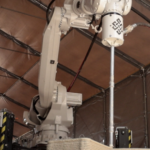In a recent study, Korean researchers have been investigating the degradation behaviors of three biodegradable plastics—polycaprolactone (PCL), poly(butylene succinate) (PBS), and poly(butylene adipate-co-terephthalate) (PBAT)—in both soil and seawater environments.
The study, published in Polymer Testing, sheds light on the complex degradation processes of these materials. In soil experiments, PCL and PBS exhibited varying degrees of degradation, with PCL showing substantial decomposition in fertilized soil. Meanwhile, PBAT displayed minimal changes in both soil environments.

One of the tests involved the 3D printing of PCL fishing jars, which are commonly used in Cephalopod-farming. The goal was to investigate whether biodegradable plastics might be suitable for use in the fishery industry.
Seawater tests revealed that PCL decomposition rates are influenced by water circulation. Furthermore, real-world marine tests conducted off the coast of South Korea demonstrated accelerated decomposition of PCL compared to laboratory conditions, with PBAT exhibiting the slowest degradation rate.
“The mechanical properties of the samples were maintained for several months before significant weakening occurred, which can prevent ghost fishing [where marine species are killed by waste nets and plastic] supporting the potential application of biodegradable plastics as replacements for nondegradable materials in fishing gear,” the researchers noted.
Interestingly, microbial growth was found to be influenced by environmental factors such as nutrient content and water circulation, highlighting the importance of understanding the interaction between biodegradable plastics and their surroundings.
This research underscores the need for comprehensive assessments of biodegradable plastics’ performance in various environments to guide their effective utilization and mitigate plastic pollution. By gaining insights into the degradation mechanisms of these materials, scientists and policymakers can make informed decisions towards a more sustainable future.
You can read the full paper, titled “Mimicking real-field degradation of biodegradable plastics in soil and marine environments: From product utility to end-of-life analysis” at this link.
Come and let us know your thoughts on our Facebook, X, and LinkedIn pages, and don’t forget to sign up for our weekly additive manufacturing newsletter to get all the latest stories delivered right to your inbox.









